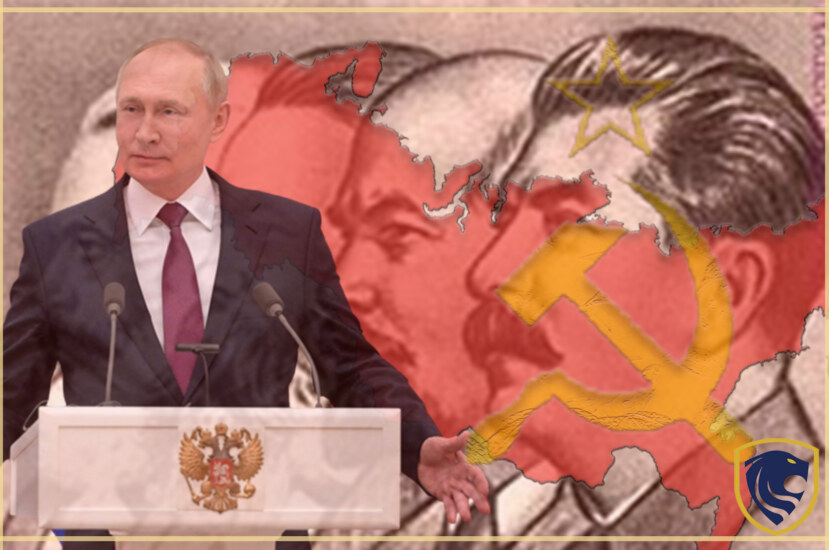The Union of Soviet Socialist Republics, or the Soviet Union, was a communist state that existed from 1922 to 1991. Although it’s gone now, the USSR will continue to be studied for centuries in order to help people understand how communism can work.
This article will provide a general overview of the rise and fall of the Soviet Union. It will be highlighting what factors led up to its dissolution in 1991. The article will explore why some people think that communism is still relevant today as well as why others believe it should be discarded permanently.
It will conclude by discussing where these countries are today. And whether we could see another union like this again in history.
What is communism?
For those who are unfamiliar, communism is a political and economic theory in which people are controlled by a single entity (which is usually their government). It was first introduced to the world on November 19, 1917, during Russia‘s Bolshevik Revolution.
It led to the rise of the USSR in 1922 and spread throughout Eastern Europe by 1945. Few countries remained communist during this time as most people viewed it to be an oppressive ideology. In 1991, over a dozen republics declared their independence from Soviet control, which led to the collapse of this union.

Soviet union
Before we get started, let’s first define communism and socialism. These terms are sometimes used interchangeably, but they are two different things. Karl Marx and Friedrich Engels were the first to coin the word “communism,” which in turn was derived from the Latin word for “common.” All of these words share a common ultimate goal: to create a stateless society where everyone contributes according to their abilities, not their possessions.
Adding socialism
Later on, they added “socialism” to this concept, representing an economic component. Basically, socialists want the government to play a major role in all aspects of life, which includes how much money people earn as well as how they spend it.
Friedrich Engels, who was Marx’s partner, had a better way of describing this ideology. He described it as “social ownership of the means of production, common ownership” and predicted that everyone would be equal under this system.

socialism
The term “socialism” remains in use today to describe a number of different theories, but communism is the original one. The Russian Revolution under Vladimir Lenin provided the first real example of a successful communist country by establishing communism in Russia on October 25, 1917
It wasn’t until later on that people started to associate this term with Russia as well as Marxism and communism. That’s why some people still wonder whether or not it’s from Russia or from Marx himself. There is an ongoing debate about this, but the consensus seems to be that it’s from both of these sources.
The USSR
The USSR was controlled by a one-party system, which involved the Communist Party of the Soviet Union (CPSU). This means that all other political parties were outlawed, and it also meant that free elections were not allowed to take place. Several years later, a constitution was approved for the USSR in December 1936, which highlighted two major points:
- All nationalities were equal in terms of rights and responsibilities.
- Public order was maintained through a combination of police enforcement and internal security measures. These included things like jails and courts that could punish those who violated the law.
It went without saying, but all of these rights were only granted to those who supported the system. The only exception was in the case of people who had committed crimes against others. That would lead them to a number of years in prison. People who violated this code could receive heavier sentences than others for doing things like looting or engaging in terrorist activity.
This is one reason why communism and socialism are often seen as synonymous by many people today. One must support government control over your personal life. And if you don’t, then they can take everything away from you through confiscation, arrest, and even capital punishment. (although that’s more of historical practice).

communism
They also have to abide by their military recruitment policies, and communism isn’t known for its laissez-faire nature. The USSR was billed as the “workers’ paradise,” and the ideal worker was supposed to be one who worked hard, obeyed the rules, and contributed to society in every way he could.
Stalin’s rule
Another reason communism is often associated with Russia is Stalin’s rule. He ruled from 1922 until 1953, which was for about 30 years. His leadership helped bring about economic improvements as well as a single-party government under his rule.
The USSR managed to grow into one of the most powerful countries globally. But these changes didn’t come without a price. There was a lot of human rights abuse that occurred during this time. Those were including forced labor and even massacres among civilians.
This led to people feeling unsafe as they could not protect themselves from harm. Many people were even imprisoned for non-violent crimes, such as writing petitions or finding out how the government was doing things secretly. This was why some people felt that the USSR was becoming more oppressive with each passing year, especially after Stalin died in 1953.

Joseph Stalin
Stalin’s rule was so extreme that it caused the USSR to become more like a dictatorship. Under his leadership, all political parties were banned, and the only place where free elections could take place was in Moscow, where he was the head of state.
Khrushchev’s plan
In 1956, Khrushchev decided to launch his plan to boost the country’s growth by implementing radical changes in many ways.
These included de-Stalinization, which meant that people who had been imprisoned during this time would be released. Another example was Khrushchev’s allowance of the production of consumer goods, which was something that Stalin had always banned.
The USSR also opened up trade with a number of other countries during this time, which was another significant change. They also developed new industries and improved their infrastructure, which helped to boost their economy. Overall, it seemed like the USSR was heading in a promising direction for the next 10-15 years. Because people were able to come together and create a prosperous economy.
This all changed when Brezhnev came into power in 1964. He didn’t believe in either de-Stalinization or capitalism. And he wanted to return to the strict controls that came with communism.

Khrushchev
He also carried out a number of reforms during his leadership, including improving the military and giving more power to the party. This state of affairs continued until the collapse of the Soviet Union in 1991, which led to a new wave of modernization.
Gorbachev Era
When Brezhnev was gone, Gorbachev came into power and tried to make things better for everyone by allowing them to travel abroad. These reforms didn’t go over well with the military since they thought it would create uncertainties. This led to him losing power in 1991, which was when Yeltsin took control and tried to implement some changes of his own.
All of this happened before and after the dissolution of the USSR. That means it’s understandable why people are a little confused about what communism is. Some people think that it only exists in Russia, while others believe that it still exists in this country as well as other parts of Europe and Asia.




